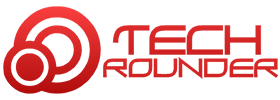In the modern business world, remote access is becoming increasingly important. As technology continues to evolve and more employees are looking to work from home, finding a secure solution for remote access has become paramount. An in-depth understanding of the benefits and pitfalls of enabling remote access allows companies to maximize their potential while maintaining data security measures.
In this article, we’ll walk through exactly what remote access entails and how businesses can best utilize it to keep up with the ever-evolving digital landscape.
What is remote access?
Remote access enables users to interact with a device or network remotely, eliminating the need for travel or commuting. It is an invaluable resource for businesses as it allows employees to securely connect and access systems even when working remotely, enabling them to stay connected wherever they are.
Additionally, remote access creates huge possibilities in networking, allowing administrators to diagnose and troubleshoot issues on local and head office devices without having physical access. The convenience of remote access outweighs its data privacy and security vulnerabilities, making it increasingly integral in business operations across numerous industries.
Types of remote access
In recent years, remote access has become increasingly widespread. Remote access enables individuals to securely access data and other resources remotely through an internet connection or network technology. Various types of remote access are available, each with its advantages and disadvantages depending on the user’s needs.
Such types include virtual private networks (VPN), secure shell (SSH) connections, remote desktop protocol (RDP) tools, and a variety of proprietary solutions from application vendors or third-party providers. Irrespective of the type chosen or the complexity of the network, remote access offers flexibility and convenience for users who need to access information anywhere else in the world.
Best Practices for remote access
Remote access can be incredibly convenient, enabling access to resources anytime and anywhere. However, with convenience come potential security risks, which make it essential that users understand the importance of implementing best practices when engaging in remote access.
These best practices include setting up strong passwords with complex combinations of numbers and symbols, enabling automatic updates to ensure no outdated software versions are running, utilizing two-factor authentication where possible, and monitoring user activity logs regularly. By following these best practices, organizations can help protect their data from malicious intrusion and keep their data safe when accessing it remotely.
Advantages and disadvantages of remote access
Remote access comes with various advantages that many people find appealing, particularly given the increased mobility of our modern lives. Remote access allows for considerable freedom and flexibility, enabling users to work and access essential data from almost any global location. This benefit is especially great for business owners or employees who frequently travel or have multiple office locations.
Furthermore, this technology can save time and money by reducing the need to travel to meetings or work sites. On the other hand, remote access also has several potential drawbacks, such as increased security risks due to working outside of company networks, as well as an increased potential for distractions while working remotely. Despite these disadvantages, remote access continues to be a valuable tool for individuals and businesses.
Why remote access control systems are important
Remote access control systems provide businesses with the necessary tools to ensure that corporate data and resources are accessed securely from remote locations, thereby eliminating any risks associated with safety breaches. In addition, such systems use encryption methods to secure communications between devices, making it difficult for third parties to hack user accounts and passwords.
They also enable organizations to control who has access to their network, allowing them to create different access roles with custom permission levels so that only authorized people can view or modify information. Moreover, in addition to helping protect sensitive corporate data from malicious activities, IT personnel can also use such systems for remote troubleshooting and maintenance purposes, thus allowing them greater reach without having to travel or invest in physical infrastructure.
Conclusion
Remote access is becoming increasingly more prevalent and necessary in the modern world. However, remote access poses many security challenges and risks that must be addressed to protect valuable data assets and networks. By following best practices such as strong passwords, two-factor authentication, automatic updates, and monitoring user activity logs, organizations can help safeguard their remote work environments from malicious intrusion.
Additionally, remote access control systems provide additional layers of protection by securing remote communications with encryption and controlling who has access to corporate resources. As remote access becomes more widespread, understanding the importance of these strategies will only become more essential for businesses looking to keep their data safe from malicious actors.
